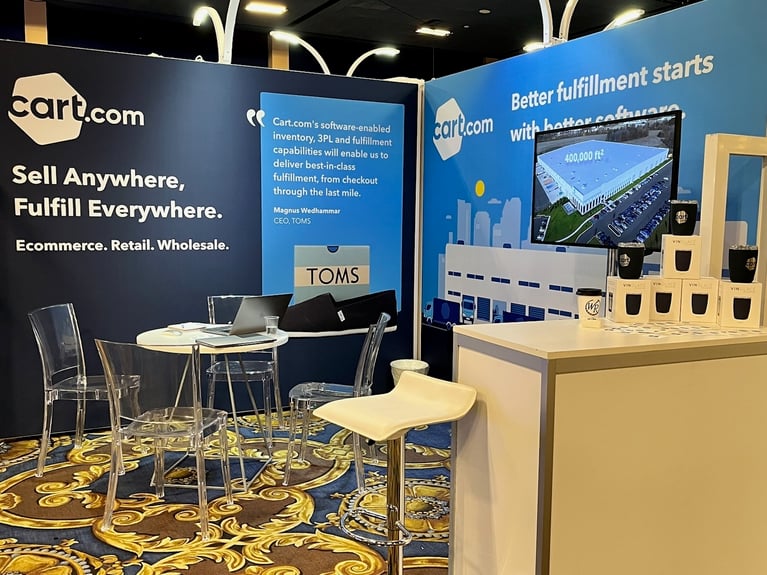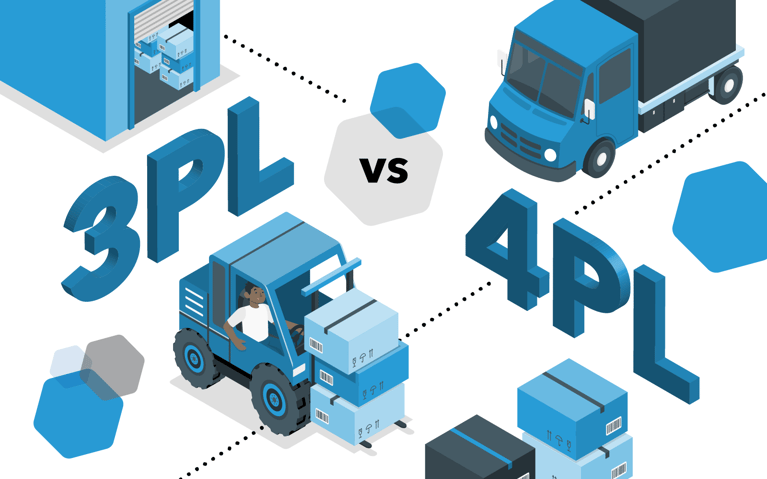A well-executed order fulfillment strategy reduces operational headaches and fosters customer loyalty, making it worth investing time and energy into. Apparel order fulfillment is a whole ’nother ballgame and can make or break an ecommerce fashion business.
With fashion trends evolving at lightning speed and consumers seeking the latest styles at their fingertips, this ‘art’ of apparel order fulfillment has become the holy grail for online merchants. It’s also one of the fundamentals of online merchandising: if you can’t get order fulfillment right, it’s hard to do much else. In this article, we’ll dive into the intricacies of clothing fulfillment and how to optimize the process and keep customers, customers.
Understanding the apparel supply chain
It’s always a good time to brush up on supply chain knowledge but today, it’s more important than ever before. Understanding how your supply chain works is a superpower, allowing brands to see around those proverbial corners to make proactive adjustments that will foster brand loyalty. Beyond suppliers, manufacturers, distributors, retailers and freight forwarders, 3PL (third-party logistics) providers play a pivotal role in the customer journey, often delivering that first impression for the brand or that repeat buyer’s expected experience. SKU complexity, returns management, quality control and multiple channels – these are the complexities that weigh on fashion and apparel retailers.
In this article, we’ll unpack some of the focuses fashion and apparel brands could take to break free from the challenges of apparel order fulfillment.
Choosing suppliers and manufacturers
Selecting the right suppliers and manufacturers is an ever-evolving process. To strengthen your fulfillment strategy, consider diversifying your supplier base to minimize risks associated with relying on a single source. You may also wish to negotiate favorable terms to secure competitive pricing and maintain quality standards with suppliers.
All apparel businesses should keep the practice of collaborating closely with their manufacturing partners. It can help ensure timely production and order fulfillment.
Inventory management
Inventory-related problems are so common in the apparel industry, and yet, they’re one of the easiest issues to prevent. Inventory management systems help track and analyze your apparel company’s inventory levels and patterns over time. Be on the hunt for an inventory tracking system that provides real-time visibility into stock levels. Regularly analyze sales data to identify trends and optimize your inventory levels accordingly.
Reducing excess inventory can free up capital for other business needs and improve inventory turnover. By just focusing on inventory alone, there is a lot of opportunity to optimize your apparel business.
Order processing and tracking
Streamlining your order processing workflow is essential for providing prompt service to your customers. We all know that a smooth checkout experience increases customer satisfaction, keeping them coming back for more!
Consider investing in order management software that integrates with your ecommerce storefront. Then, you’ll be able to automate order processing wherever possible to reduce errors and speed up fulfillment times. These order tracking systems are also usually great at keeping customers informed about their shipment's progress and routing orders on the fly.
Warehousing and storage for clothing fulfillment
Warehousing and storage may not be glamorous but is another aspect of apparel and clothing fulfillment you’ll need to consider. Outsourcing your apparel’s warehousing to a 3PL provider can be particularly useful if you lack sufficient space for all the merchandise or the resources to effectively manage a warehouse. If you go with a 3PL provider, make sure to leverage their expertise in managing storage, inventory, and order picking.
Properly organized storage facilities can lead to faster order fulfillment and improved customer satisfaction, which is always what we’re aiming for at the end of the day.
Packing and shipping
The way you pack and ship your apparel items can significantly impact customer satisfaction and brand reputation. Investing in eco-friendly packaging options can help reduce waste and appeal to environmentally conscious consumers. You can even try developing standardized packing procedures to minimize errors, reduce shipping costs, and add to your customer experience – nobody appreciates unnecessary packaging waste.
Quality control and returns
An inevitable and tricky part of being in the apparel industry is dealing with those pesky returns. Focusing on quality control from the start is a good way to reduce the number of returns to begin with. Having quality control checks at various stages of the supply chain, from manufacturing your apparel to order fulfillment, will help reduce the sheer volume of returns received.
Something as simple as a clear return policy on your website can drastically help to align customer expectations.
To deal with returns with the least amount of headaches, prioritize efficiency and customer convenience in the process. It can be painstaking, but it can also build customer loyalty and satisfaction over time.
Technology and automation
Harnessing technology and automation can transform your clothing fulfillment operations. Consider the order management system (OMS) and warehouse management system (WMS) as technology-assisted order fulfillment processes result in more accurate inventory and order management tracking. AI technology-driven data analytics can help further optimize your fulfillment methodologies to drive sustainable growth.
The WMS/OMS is your window into your fulfillment operations, allowing a view into order processes with predictive analytics to forecast customer demand and optimize inventory levels.
Managing costs and margins
It’s all about the Benjamins…
Monitoring and optimizing your cost management strategy is the best way to maintain healthy and stable profit margins. Continuous assessment of your pricing strategy is necessary to stay competitive without compromising profitability. It’s certainly a balance that can take a bit of time to discover for your brand, so patience and persistence are key! To find your competitive edge in pricing, try exploring options to reduce shipping costs.
Explore options to reduce shipping costs amongst the plethora of providers, negotiating with carriers for volume discounts or utilizing regional fulfillment centers to minimize shipping distances. Even the smallest cost reductions can add up over time and give your brand just the edge it needs to stay competitive in the saturated apparel marketplace.
Incorporating shipment and order fulfillment services
Many ecommerce apparel stores opt to partner with third-party logistics providers to handle their order fulfillment processes. 3PLs usually specialize in warehousing, order processing, and shipping, allowing you to focus on growing your business. When choosing a 3PL, consider their location, capacity, technology capabilities, and experience in handling apparel products specifically.
You’ll want to find the 3PL provider that best fits your specific business needs and one you could scale with!
Mastering order fulfillment in 2023 with Cart.com
Reaching customers wherever they are is always the goal, and it's precisely what Cart.com’s software solutions aim to achieve…
Sell and fulfill anywhere!
We pride ourselves on assisting some of the world's most beloved fashion and apparel brands in selling and fulfilling orders across various ecommerce channels. Our integrated solutions empower online merchants to operate and expand their apparel businesses. Whether you're a small fashion retailer or a global clothing brand, Cart.com’s tools can ensure that your products find their way into the hands of your valued customers.
Contact us if you’d like to connect with one of our Cart.com friendly fulfillment experts, we’re always happy to help!
About the Author

Rich Reba
Rich Reba is a seasoned marketing professional with 15+ years of collective experience. Rich started his career in the finance realm, working for companies including Merrill Lynch, AXA Advisors, Vanguard Dealer Services, and Summit Financial Resources, where he held sales support, analyst, and marketing positions.
Read Full BioSubscribe to our emails for the latest industry insights!
By entering your email, you agree to receive marketing emails from Cart.com






